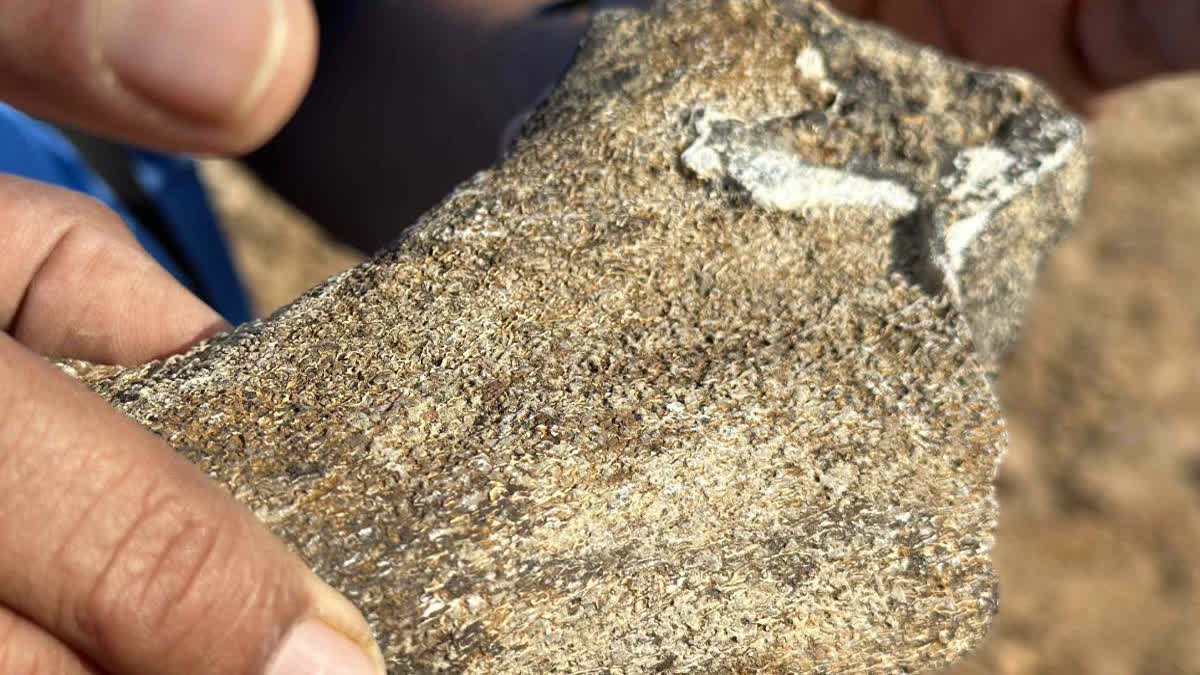Kutch: A 10.5 million-year-old monkey fossil resembling those found in the Shivalik Range in the Himalayas has been unearthed by an NRI researcher in the Tappar Dam area of Anjar taluka in East Kutch.
Dr Hriji Bhudia, the London-based palaeontologist (a scientist who studies the life of past geologic periods as known from fossil remains) who found the fossil, said, "This monkey fossil was found as Shivalik Pithex (monkey in Greek) of Miocene Age (from 23.03 to 5.33 million years ago). Fossils found near the Tappar Dam in Anjar include bones of a monkey's leg, shoulder and arm.
A fossilised monkey teeth were found 11 years ago during an exploration in the vicinity of Tappar Dam and Dr Bhudia discussed this with the students. In the aftermath, he started further explorations and planned to return in 2019. But the Covid-19 pandemic forced him to put the plan on the back burner. Bhudia returned in 2023 but couldn't make it to Tapper Dam due to a hectic schedule. Finally this year, Dr Bhudia succeeded in finding the monkey fossil and research to trace the remains of its skull and spinal cord will be taken up in future.
"Humans evolved from monkey species, viz. our ancestors were monkeys. However, these apes differed slightly from the human ancestor apes. While some palaeontologists consider the Siwalik Pithex to be the ancestor of the present orang-utan and gorilla," Bhudia said.
The Migration
According to Dr Bhudia, these monkeys came to this area in search of water and food and may have slipped and fallen in the dam due to the steep slope, causing damage to their bones. A close study of the trunk, shoulders, arms and legs of the monkey tells how they lived.
Where were Fossils of Monkeys First Found?
Fossils of the Siwalik Pithex Age are found only in the Siwalik range of the Himalayas and Kutch. Fossils of monkeys were first found in the Himalayan region in the 19th century.
Dr Bhudia — who hails from Madhapar village in Bhuj taluka, district headquarters of Kutch — served as the superintendent of Bhuj General Hospital. Despite being trained as a physician, he has a keen interest in palaeontology and indulged in research for years.
Kutch — a Geological Heritage
The discovery of hoary fossils underlines the historical importance of Kutch as the stream of Kutch has preserved valuable fossils. The entire Kutch region is a geological heritage dotted with rich sites where many fossils can still be found. Fossils of a 49-foot Vasuki Nag were found a few years back near the GMDC mine in Mata Madha, a famous pilgrimage site of goddess Ashapura.
A border district of Gujarat, Kutch is famous for handicrafts and tourism. Vestiges of millions of years of human development are found here. Excavations carried out by scientists, geologists and archaeologists from time to time unearth priceless ancient remains and the recent discovery is another addition to the treasure trove.
Also Read:



